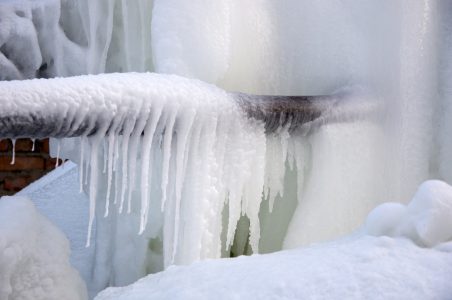How to Avoid Frozen Plumbing in Cold Weather: Professional Tips
How to Avoid Frozen Plumbing in Cold Weather: Professional Tips
Blog Article
What're your thoughts about 6 Ways to Prevent Frozen Pipes?

Cold weather can wreak havoc on your pipes, specifically by freezing pipes. Here's just how to stop it from taking place and what to do if it does.
Introduction
As temperatures decline, the threat of frozen pipes boosts, possibly resulting in expensive repair services and water damages. Recognizing how to prevent frozen pipes is essential for homeowners in cool environments.
Comprehending Icy Pipes
What creates pipes to ice up?
Pipes freeze when revealed to temperatures listed below 32 ° F (0 ° C) for expanded periods. As water inside the pipes ices up, it expands, putting pressure on the pipeline wall surfaces and possibly causing them to rupture.
Dangers and problems
Icy pipelines can bring about supply of water disruptions, home damage, and expensive repairs. Ruptured pipelines can flooding homes and trigger extensive architectural damages.
Indications of Frozen Water Lines
Recognizing icy pipes early can avoid them from bursting.
Exactly how to determine icy pipelines
Search for lowered water flow from faucets, uncommon smells or noises from pipes, and visible frost on subjected pipes.
Avoidance Tips
Shielding prone pipelines
Wrap pipes in insulation sleeves or utilize warm tape to protect them from freezing temperature levels. Focus on pipes in unheated or outside areas of the home.
Home heating methods
Maintain indoor areas properly heated up, particularly locations with pipes. Open up cabinet doors to permit warm air to distribute around pipelines under sinks.
Safeguarding Outside Pipes
Garden hose pipes and outside taps
Disconnect and drain garden pipes prior to winter. Install frost-proof spigots or cover outside faucets with protected caps.
What to Do If Your Pipelines Freeze
Immediate activities to take
If you believe icy pipelines, maintain taps open up to relieve pressure as the ice thaws. Utilize a hairdryer or towels soaked in warm water to thaw pipes gradually.
Long-Term Solutions
Structural changes
Think about rerouting pipes away from outside walls or unheated locations. Add additional insulation to attic rooms, basements, and crawl spaces.
Upgrading insulation
Purchase high-grade insulation for pipes, attic rooms, and wall surfaces. Appropriate insulation assists preserve regular temperatures and decreases the risk of icy pipelines.
Conclusion
Stopping icy pipes needs positive steps and quick reactions. By understanding the causes, indications, and safety nets, house owners can secure their pipes throughout winter.
5 Ways to Prevent Frozen Pipes
Drain Outdoor Faucets and Disconnect Hoses
First, close the shut-off valve that controls the flow of water in the pipe to your outdoor faucet. Then, head outside to disconnect and drain your hose and open the outdoor faucet to allow the water to completely drain out of the line. Turn off the faucet when done. Finally, head back to the shut-off valve and drain the remaining water inside the pipe into a bucket or container. Additionally, if you have a home irrigation system, you should consider hiring an expert to clear the system of water each year.
Insulate Pipes
One of the best and most cost-effective methods for preventing frozen water pipes is to wrap your pipes with insulation. This is especially important for areas in your home that aren’t exposed to heat, such as an attic. We suggest using foam sleeves, which can typically be found at your local hardware store.
Keep Heat Running at 65
Your pipes are located inside your walls, and the temperature there is much colder than the rest of the house. To prevent your pipes from freezing, The Insurance Information Institute suggests that you keep your home heated to at least 65 degrees, even when traveling. You may want to invest in smart devices that can keep an eye on the temperature in your home while you’re away.
Leave Water Dripping
Moving water — even a small trickle — can prevent ice from forming inside your pipes. When freezing temps are imminent, start a drip of water from all faucets that serve exposed pipes. Leaving a few faucets running will also help relieve pressure inside the pipes and help prevent a rupture if the water inside freezes.
Open Cupboard Doors
Warm your kitchen and bathroom pipes by opening cupboards and vanities. You should also leave your interior doors ajar to help warm air circulate evenly throughout your home.
:strip_icc()/snow-outdoor-faucet-pipes-4af65d1e5e904fb1aa7bf74071fe5d89.jpg)
Do you really like reading up on Prevent Frozen Pipes ? Place feedback down below. We would be delighted to hear your thinking about this review. We hope to see you back again in the near future. Sharing is nice. Helping people is fun. We value your readership.
Call Today Report this page